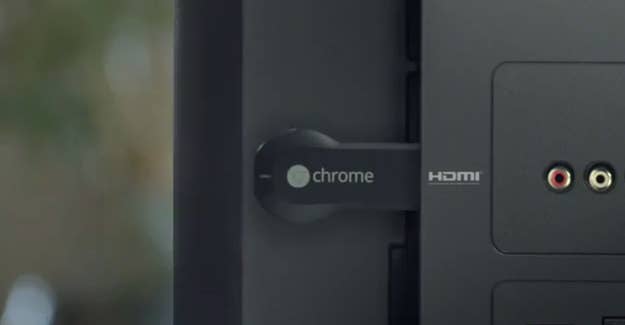For devices that connect to your TV, the only thing that has ever mattered is the content. America isn't waiting for a big tech breakthrough to make internet-only TV happen. It's waiting for more, and better, content: better shows, better movies, lower prices. When, without trying very hard, a typical customer can get more content from an internet TV device that from a cable box, that customer will get rid of the cable box.
This is a lesson Steve Jobs learned, and shared, in 2008, after the first version of the Apple TV had flopped. Apple released a major update that made it easier to rent, buy and play content directly from the device, rather than through another machine. He said at the time:
We've all tried to figure out how to do movies, and you know what? We've all missed. No one has succeeded yet. We tried with Apple TV. Apple TV was designed to be an accessory for iTunes and your computer. It's not what people wanted. We learned what people really wanted was movies, movies movies.With that, the Apple TV became a much better set-top box — because it got out of the way.
But it still flopped, in part because it was too expensive but mostly because it didn't have enough content. Even the most recent Apple TV, priced at a hundred dollars and equipped with AirPlay, has sold modestly compared to other products Apple makes. Would it help if it were cheaper? Sure. But a $50 Apple TV, or a $30 Apple TV, or even a $10 Apple TV, wouldn't destroy the cable industry, and it wouldn't appreciably change the rate at which people switch fully to internet TV (a very slow rate, it should be noted). The cable industry still has the content that people want. That's starting to change in profound ways. Note: starting.
Which brings us to Google's Chromecast. This product, a small, $35 dongle-like device which Google announced today, is getting incredible hype. Mat Honan at Wired called it "Google's Miracle Device," praising it for being "delightfully cross platform," and suggesting that its ability to play content from your browser window is "huge."
The device is immediately appealing on some specific merits. It's very cheap and very small, though designing and describing it as a "dongle" is disingenuous and gimmicky: a true dongle wouldn't need to be plugged into a power source, and I suspect a lot of buyers will be disappointed to see a cable hanging from what they thought would work like a USB stick (the opening frames of the video above are, basically, a lie for users who don't have HDMI 1.4+ TVs). It can play video content from an iPhone or an Android phone or a laptop, which is nice — and closes an Android-sized hole in the market left open by the Apple-only AirPlay.

But what the Chromecast does not do is provide significantly easier access to content that customers couldn't get on their TVs before. It doesn't solve internet TV's live sports problem, its HBO problem, its mainstream franchise problem, its familiarity problem. Basically, the content viewers crave, and the content that internet TV is still gaining access to, isn't hiding in a Chrome tab (and if it is, it's probably either porn or illegal).
The Chromecast may very well be successful as an alternative to the $100 Apple TV or the $50+ Roku. But right now, that's not much of a battle to win: it might sell a lot of units as a cheap Netflix device, or as a fun phone accessory. But it's still a secondary device – and one that I think many people might find confusing. If a typical TV owner walks into a Best Buy and says to the associate, "I want to watch Netflix and stuff on my TV," the associate will have three obvious options: he can recommend an Apple TV, which fits the description for $100; he can recommend a Roku, which fits the description for $50, or he can recommend the $35 Google dongle, which he will have to explain. Does it play Netflix? Sure, but, like, from your phone. Why is it shaped like that? Well, you still have to plug it in, so I'm not really sure. Do I have to use my phone to play everything? Sort of! You can use your laptop, too. Did I mention it's cheap?
Most people aren't clamoring for a bridge between their phones or laptops and their TV — they're clamoring for more content. And judging by what companies like Netflix are doing, it's coming. But not fast enough, not yet.
When — not if — your phone and your laptop have that content, such a system will be in much higher demand. Chromecast is a lucid, smart guess at how we'll want our devices to connect with each other after the cable TV complex has been toppled. But today, it's just another box connected to the TV. New device, new shape, new name, new price. But the same content.

